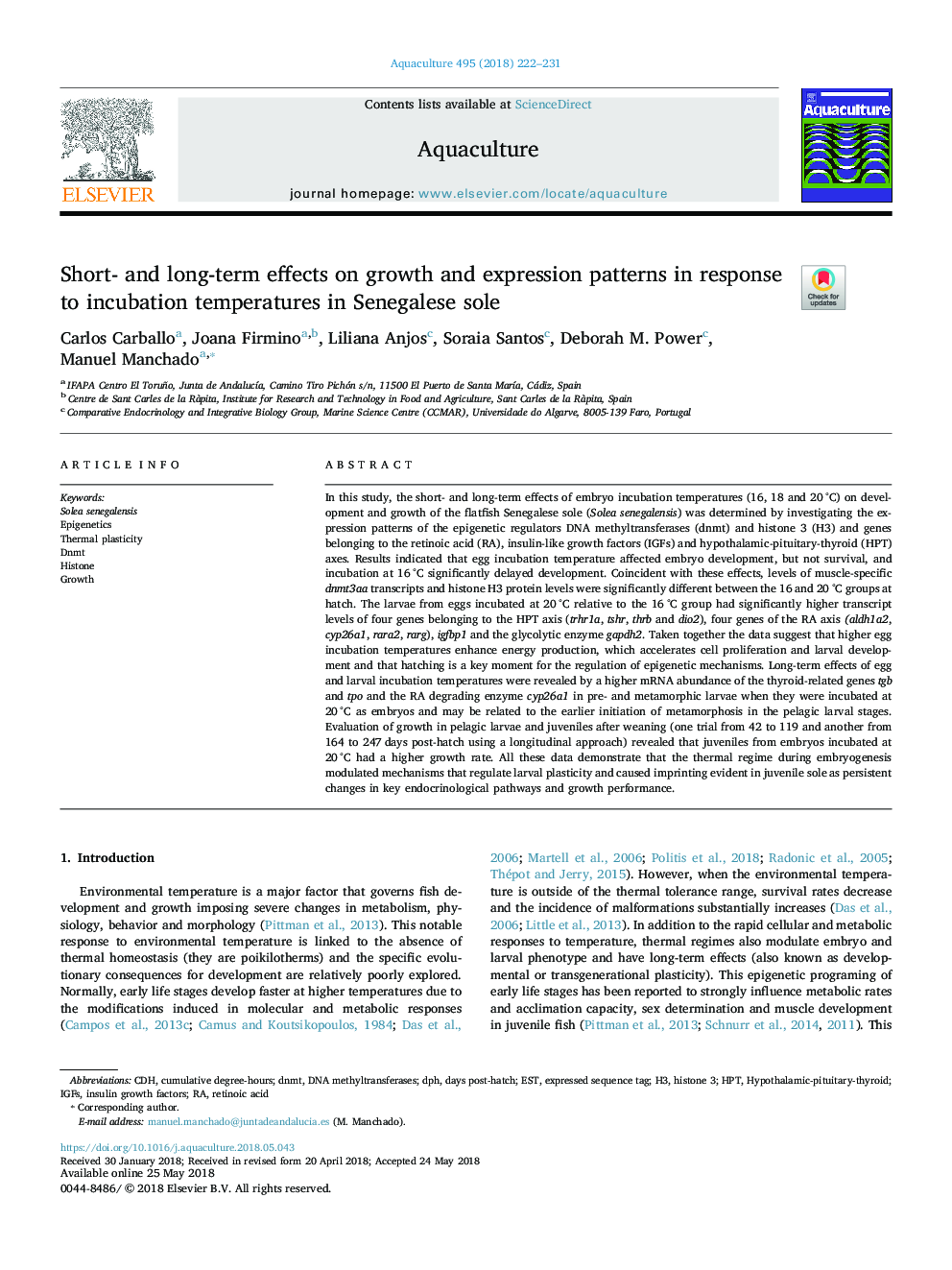| کد مقاله | کد نشریه | سال انتشار | مقاله انگلیسی | نسخه تمام متن |
|---|---|---|---|---|
| 8493066 | 1552793 | 2018 | 10 صفحه PDF | دانلود رایگان |
عنوان انگلیسی مقاله ISI
Short- and long-term effects on growth and expression patterns in response to incubation temperatures in Senegalese sole
ترجمه فارسی عنوان
تأثیرات کوتاه مدت و بلند مدت بر الگوهای رشد و بیان در پاسخ به درجه حرارت انکوباسیون تنها در سنگال
دانلود مقاله + سفارش ترجمه
دانلود مقاله ISI انگلیسی
رایگان برای ایرانیان
کلمات کلیدی
Solea senegalensishptDnmtDNA methyltransferasesIGFsDPHCDH - HRCEST - استEpigenetics - اپی ژنتیکExpressed Sequence Tag - تکرار اظهار نظرRetinoic acid - رتینوئیک اسیدGrowth - رشدdays post-hatch - روز بعد از اخراجHistone - هیستونHistone 3 - هیستون 3Hypothalamic-pituitary-thyroid - هیپوتالاموس - هیپوفیز - تیروئیدThermal plasticity - پلاستیک حرارتی
موضوعات مرتبط
علوم زیستی و بیوفناوری
علوم کشاورزی و بیولوژیک
علوم آبزیان
چکیده انگلیسی
In this study, the short- and long-term effects of embryo incubation temperatures (16, 18 and 20â¯Â°C) on development and growth of the flatfish Senegalese sole (Solea senegalensis) was determined by investigating the expression patterns of the epigenetic regulators DNA methyltransferases (dnmt) and histone 3 (H3) and genes belonging to the retinoic acid (RA), insulin-like growth factors (IGFs) and hypothalamic-pituitary-thyroid (HPT) axes. Results indicated that egg incubation temperature affected embryo development, but not survival, and incubation at 16â¯Â°C significantly delayed development. Coincident with these effects, levels of muscle-specific dnmt3aa transcripts and histone H3 protein levels were significantly different between the 16 and 20â¯Â°C groups at hatch. The larvae from eggs incubated at 20â¯Â°C relative to the 16â¯Â°C group had significantly higher transcript levels of four genes belonging to the HPT axis (trhr1a, tshr, thrb and dio2), four genes of the RA axis (aldh1a2, cyp26a1, rara2, rarg), igfbp1 and the glycolytic enzyme gapdh2. Taken together the data suggest that higher egg incubation temperatures enhance energy production, which accelerates cell proliferation and larval development and that hatching is a key moment for the regulation of epigenetic mechanisms. Long-term effects of egg and larval incubation temperatures were revealed by a higher mRNA abundance of the thyroid-related genes tgb and tpo and the RA degrading enzyme cyp26a1 in pre- and metamorphic larvae when they were incubated at 20â¯Â°C as embryos and may be related to the earlier initiation of metamorphosis in the pelagic larval stages. Evaluation of growth in pelagic larvae and juveniles after weaning (one trial from 42 to 119 and another from 164 to 247â¯days post-hatch using a longitudinal approach) revealed that juveniles from embryos incubated at 20â¯Â°C had a higher growth rate. All these data demonstrate that the thermal regime during embryogenesis modulated mechanisms that regulate larval plasticity and caused imprinting evident in juvenile sole as persistent changes in key endocrinological pathways and growth performance.
ناشر
Database: Elsevier - ScienceDirect (ساینس دایرکت)
Journal: Aquaculture - Volume 495, 1 October 2018, Pages 222-231
Journal: Aquaculture - Volume 495, 1 October 2018, Pages 222-231
نویسندگان
Carlos Carballo, Joana Firmino, Liliana Anjos, Soraia Santos, Deborah M. Power, Manuel Manchado,
